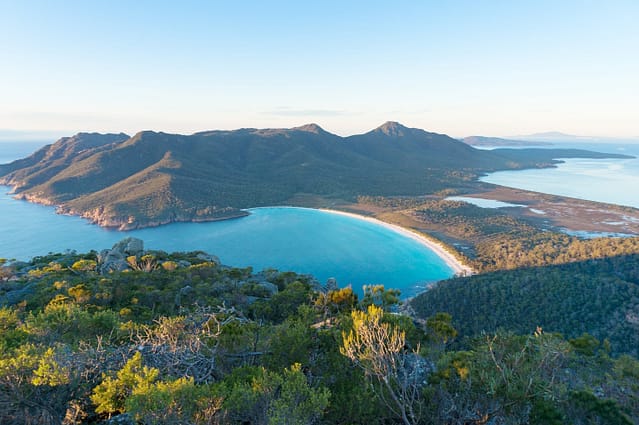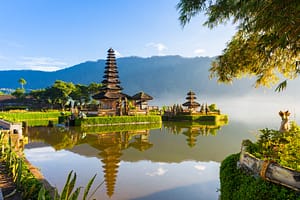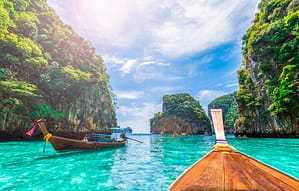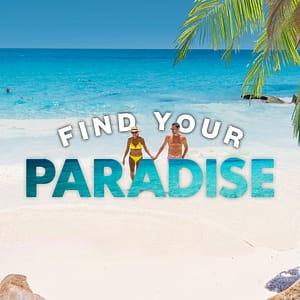This is our complete guide to Freycinet National Park. If you’re holidaying in Tasmania, you need to read this.
Quick Menu
Overview | History | Features | Hiking | Requirements | When to Visit | Getting There
Are you thinking about a Tasmanian holiday? There are so many beautiful places in Tassie, and we know you’d love to explore them all, but you probably won’t have the time (unless you’re taking that well-deserved long service leave).
If there’s one natural attraction you’ve got to hit up, it’s Freycinet National Park. This Tassie icon is popular with everyone from families to loved-up couples, and it’s a lot more accessible than many other national parks.
We’ve put together a comprehensive guide to Freycinet to help you make the most of your awesome Tasmanian getaway. Read on!

Overview of Freycinet National Park
Freycinet National Park is just over two hours’ drive from Club Wyndham Seven Mile Beach, and it’s arguably one of eastern Tasmania’s biggest draws.
The picturesque landscapes are visually enthralling – the granite-hided Hazards, tinted pink by veins of orthoclase.
The dramatic sweep of the Freycinet Peninsula.
The aquamarine waters of the Tasman Sea lapping at ivory beaches.
The panoramic views of Wineglass Bay.
Even if you’re not someone who likes the whole idea of exercising on holiday, Freycinet is a temptation that’s difficult to resist.
Compared to the unforgiving vastness of other options like Franklin-Gordon Wild Rivers and the Walls of Jerusalem, Freycinet’s terrain is relatively gentle.
There’s no sudden blizzards, no brutal summit ascents, just the sheer beauty of Tasmania’s east coast, and it’s become a popular place for romantic hikes and sunrise photography.
For those who enjoy bird-watching, Freycinet’s also a great choice – with dozens of different species calling the park home, you might see the likes of flame robins, fairy penguins, or endangered black-browed albatrosses.
Freycinet’s History
Freycinet has a long history. Its main geographical features – the Hazards, the peninsula and its various bays – were formed roughly 60 million years ago, mostly via violent earthquakes and significant erosion.
Europeans first came into contact with the area in 1791, when the captain of the Matilda mistook the peninsula for an island; roughly ten years later, French explorer Nicholas Baudin gave Freycinet its name during an expedition to Tasmania.
During the first half of the 19th century, Freycinet, along with other parts of Tasmania’s east coast, became popular with whaling companies, with places like Wineglass Bay and Coles Bay playing host to on-shore whaling stations. Names like Slaughterhouse Bay reflect this sombre heritage.
Today, Freycinet National Park is a hugely popular tourist destination, drawing visitors from across Australia.
Unfortunately, this upsurge in human activity has had a measurable impact on the environment, so we’d like to take this opportunity to remind you to be mindful when visiting.
Drive carefully, watch out for wildlife, pick up your rubbish, and don’t bring foreign matter like seeds or contaminated dirt into the park.

Park Features
Wineglass Bay
One of Freycinet’s most popular areas, Wineglass Bay’s postcard views and pristine beaches make it a big seller. From the Wineglass Bay look-out, visitors are able to enjoy sweeping views of the bay and the Tasman Sea. If you’re into photography, it’s a great opportunity for some landscape shots.
Sleepy Bay
The nexus of Freycinet’s water activities, Sleepy Bay’s sheltered waters make it the perfect zone for snorkelling and diving. There’s no vendors hawking second-hand swimming gear here, so you’ll have to bring your own.
When the tide goes out, you’ll be able to see some of the bay’s spectacular rockpools, which often trap small fish and other marine life.
The Friendly Beaches
The Friendly Beaches feature miles of silica-laden sand and beachside heath.
Although you’re more than welcome to swim, walking along the beaches reveals the origin of the area’s name – as your feet cause the silica grains to rub together, they produce a quiet squeaking noise. It’s almost like the beaches are saying hello!
Schouten Island
Famous for its fault-line terrain – half the island is granite, while the other half is dolerite – Schouten Island is home to a variety of birds, lizards and seals.
Wander through the granite side’s scrubland, or walk under the towering eucalypts on the dolerite side. It’s accessible via a half-an-hour boat ride from Coles Bay.
The Hazards
These rugged granite mountains dominate the Freycinet skyline. Imbued with particles of orthoclase feldspar, the Hazards appear to have a slightly pink or orange tint, which is especially obvious when they’re bathed in the light of the rising sun.
Although they’re fairly difficult to climb, you’ll be rewarded with beautiful views of the surrounding area if you make it to the top.
Honeymoon Bay
This tiny, sheltered cove is actually a part of Coles Bay, but it’s easily the most romantic area of Freycinet. Swim in its calm, transparent waters, or watch the sunrise with your partner while perched on lichen-stained rocks.

Best Walking Tracks
Sleepy Bay Track
A short, 10-minute walk, the Sleepy Bay Track is accessible via Cape Tourville Road, which has parking available.
You can wander to the wooden-fenced lookout and gaze out across the waters of the Bay, or clamber down the orange-hued rocks to dip a hand in the water.
There are a few very small sandy strips which make entry to the water easier, but remember to be careful, especially at low tide – you definitely don’t want to hurt yourself!
Mount Amos Track
The Mount Amos Track ascends Mount Amos, one of the Hazards, and takes about 3 hours to complete. It’s accessible via Freycinet Drive followed by Malunna Road; park at the Wineglass Bay carpark.
The track is one-way, and fairly difficult, with lots of short, steep sections that require a moderate degree of fitness. Make sure you wear good-quality hiking shoes, because the granite rocks you’ll need to clamber over can get quite slippery at times.
Wineglass/Hazards Beach Circuit
Explore the best of Freycinet National Park with this circuit walk that skirts the peninsula. It takes between 5 and 6 hours to complete, with almost 11 kilometres of walking involved.
Although most of the track is level and fairly easy, the ascent to Wineglass Bay lookout is reasonably difficult, with a number of rocky sections.
The Isthmus Track section of the circuit involves walking over a boardwalk, which is a pleasant change of pace!
Ranger-Guided Tours
Across the summer period, Freycinet National Park rangers offer informational activities, including guided walks, talks and slideshows. If you’re visiting with kids, this is a great way to teach them about Freycinet while keeping them entertained.

Requirements
Like all of Tasmania’s national parks, Freycinet requires visitors to hold a valid Tasmanian parks pass, which you can purchase online.
Although there’s a range of passes available, most visitors will find the Holiday Vehicle Pass the most appropriate – it covers a single private vehicle (which includes 8 people) for 8 weeks, and allows access to every national park in Tasmania. These cost AUD 60.00*.
You can wear whatever you want when you go hiking, but we recommend sturdy hiking boots and comfortable clothing, mostly because Freycinet’s rocky sections can be quite slippery.
The area’s also popular with snakes, so make sure you watch where you step!
*Valid as of October 2019.
Best Time of Year to Visit
Freycinet’s temperatures are fairly mild, with an average summer high/low of 23 °C/13°C, and an average winter high/low of 14°C/6°C.
Rain is relatively infrequent, so, unless you get unlucky, you shouldn’t have to worry too much about packing an umbrella.
Keep in mind that summer is the peak season, so, if you’ve got options, dodge the crowds by visiting in spring or early autumn – winter might be a little chilly for swimming!
If you choose to brave the off-season, prepare to be rewarded with whales. From Cape Tourville and the CT Lighthouse, you can see southern right whales from June to late October, and humpback whales during May-July and September-November.

Getting to Freycinet National Park
Getting to Freycinet from Club Wyndham Seven Mile Beach is really easy, although you will have to hire a car.
Just follow the Tasman Highway (A3) along Tasmania’s east coast, until you reach Coles Bay Road (C302), which you can then follow until you reach the Freycinet National Park Visitor Centre. With normal traffic, it takes roughly 2 hours and 15 minutes.
The Friendly Beaches, the Coles Bay township, and the delicious Freycinet Marine Farm are all great stopping points on the drive in.








